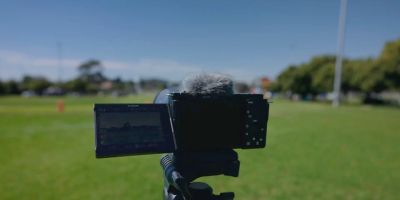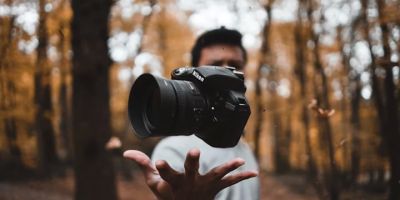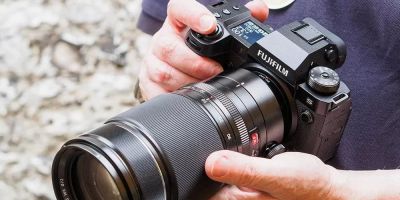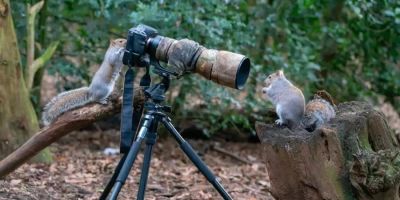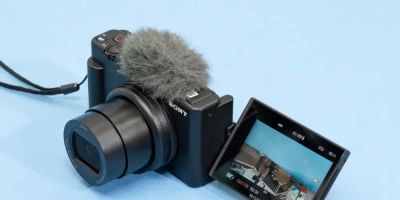The Essential Gear for Macro Photography
As a passionate macro photographer, I know that having the right gear can make all the difference in capturing stunning close-up shots of the world around us. Whether you're a beginner or a seasoned professional, selecting the best gear for shooting macro photography can significantly enhance your ability to capture intricate details, textures, and natural beauty. In this article, I'll walk you through the most important equipment you'll need for macro photography, from cameras and lenses to lighting and accessories. Let's dive into the world of macro photography gear and discover what works best for your needs!
1. Macro Lenses: The Heart of Macro Photography
When it comes to macro photography, your lens is undoubtedly the most crucial piece of gear. A dedicated macro lens is designed to allow you to focus on very small subjects with incredible detail. These lenses are optimized for capturing life-sized (1:1) or larger-than-life images. The longer the focal length of the macro lens, the greater the working distance you have between your subject and the lens, which is especially helpful when shooting delicate insects or flowers.
Some of the best macro lenses available on the market today include:
- Canon EF 100mm f/2.8L IS USM Macro Lens – A versatile and high-performance macro lens with image stabilization, perfect for capturing sharp and detailed images.
- Nikon AF-S VR Micro-Nikkor 105mm f/2.8G IF-ED – Known for its superior image quality and vibration reduction, this lens is ideal for both stills and video work.
- Sigma 105mm f/2.8 EX DG OS HSM Macro Lens – An excellent option for photographers seeking great value for money without compromising on image quality.
Depending on your camera system, you'll need to select a lens that's compatible with your gear, but regardless of brand, make sure the lens offers true macro magnification, ideally at a 1:1 ratio.
2. Cameras: Choosing the Right Camera Body
While a macro lens is crucial, your camera body plays an equally important role in ensuring that you can capture sharp, detailed images. The camera's resolution, sensor size, and autofocus capabilities will all influence your ability to shoot high-quality macro photos.
Full-frame cameras are often preferred by professional macro photographers due to their larger sensors, which allow for better image quality and greater depth of field control. However, crop-sensor cameras can still deliver excellent macro results, especially if you're on a budget.
Some great camera options for macro photography include:
- Canon EOS 5D Mark IV – A full-frame camera with excellent image quality, fast autofocus, and a large range of lenses.
- Nikon D850 – Known for its high resolution and outstanding image clarity, this camera is perfect for capturing fine details in macro shots.
- Sony Alpha A7R IV – A mirrorless full-frame camera with a high-resolution sensor and advanced autofocus for macro work.
When choosing a camera, ensure it offers high-quality manual focus capabilities, as macro photography often requires precise adjustments that autofocus systems can struggle with, especially at high magnifications.
3. Tripods: Stability for Sharp Macro Shots
In macro photography, even the slightest camera shake can result in blurry images, so a sturdy tripod is an essential tool in your gear arsenal. A tripod allows you to maintain a steady camera position, ensuring sharp, detailed images. Look for a tripod that offers precise adjustments and stability, especially when shooting at high magnifications where any movement is magnified.
Some of the best tripods for macro photography include:
- Manfrotto 190XPRO – A versatile tripod with a robust build and excellent stability, perfect for macro photographers who need to fine-tune their shots.
- Gitzo GT1545T Series 1 Traveler – A lightweight yet stable tripod ideal for photographers who need portability without sacrificing performance.
- Benro Mach3 TMA38CL – A carbon fiber tripod known for its durability and excellent vibration reduction, essential for macro photography.
Additionally, make sure to use a tripod with a ball head that allows for easy adjustment of your camera's orientation without introducing instability.
4. Lighting: Illuminating the Smallest Details
Lighting plays a critical role in macro photography, as small subjects often require precise lighting to highlight their textures and intricate details. Natural light can be fantastic, but for more control, many macro photographers use external flashes or specialized lighting setups.
Some lighting options for macro photography include:
- Ring Lights – A popular lighting choice for macro photographers, ring lights provide even, soft illumination that helps reduce harsh shadows.
- Macro Flash Units – Dedicated macro flashes like the Canon MR-14EX or Nikon R1C1 are specifically designed to provide consistent, adjustable lighting for close-up shots.
- LED Panels – For continuous light, LED panels can be very effective, offering adjustable brightness and color temperature.
When choosing lighting, be sure to consider the direction and intensity of light. For macro work, diffuse light sources often work best to prevent harsh shadows and highlights.
5. Other Essential Accessories for Macro Photography
In addition to the main pieces of gear, several accessories can enhance your macro photography experience. Some of these include:
- Extension Tubes – These hollow tubes fit between your camera body and lens to reduce the minimum focusing distance, allowing you to get even closer to your subject.
- Macro Rails – Focus rails enable precise control of the camera's position, making it easier to achieve sharp focus across multiple focal points.
- Wireless Shutter Release – This accessory allows you to take photos without physically pressing the shutter, reducing the risk of camera shake during long exposures.
- Diffusers – Using diffusers to soften the light can help create a more natural and pleasing look in your macro shots, especially for delicate subjects like flowers or insects.
These accessories, combined with your camera and lens, can provide you with even greater control over your macro shots and help you achieve professional-quality results.
6. Macro Photography Techniques: Getting the Best Results
With the right gear in hand, it's time to focus on techniques that will help you capture stunning macro images. Some tips to keep in mind include:
- Use a Small Aperture – To achieve a greater depth of field, use a smaller aperture (higher f-stop number), which helps keep more of your subject in focus.
- Focus Stacking – For subjects with a lot of detail, consider focus stacking, a technique where multiple images are taken at different focus points and then combined in post-processing to achieve a deeper depth of field.
- Use Manual Focus – Autofocus can be inaccurate when shooting macro subjects, so manually adjusting focus is often the best way to ensure sharpness and detail.
Macro photography is all about patience and precision, and with the right gear and techniques, you can create breathtaking images that showcase the hidden beauty of the world around you!

